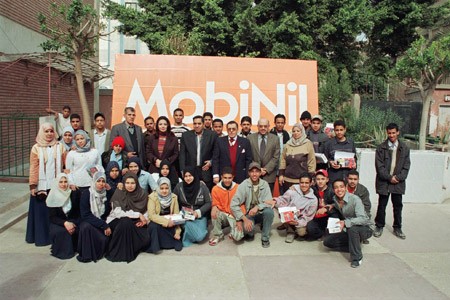Context:
Egypt, with a population of 91.51 million and GDP $330.8 billion, has an unemployment rate of 12%. Youth constitute 13.5% of the total population and 20.7% of the working-age population. The male-female salary gap is up to 35% in the public sector and 80% in the private sector. While the proportion of youth not in employment, education or training (NEET) is 26.9%, the proportion of female youth (35.2%) is higher than that of male youth (18.9%). The average educational attainment is 8 school years in Egypt where the adjusted net enrolment rate in upper secondary education reached 64.8% in 2014. Moreover, social and cultural barriers affect the employability of youth with mental disabilities due to their poor education and rehabilitation as well as negative attitudes of parents, society as a whole, and businesses.
A Right for An Equal life targets Egyptian youth (18-30 years) with mental disabilities attending schools. Psychologists, social workers and young people (“best buddies”) implement the empowerment program so that the participants share their thoughts and worries comfortably.
Implementation of programme/ initiative:
A Right for An Equal Life is a partnership between Ebtessama Foundation, Social Fund for Development, Mobinil, Ministry of Education, Ministry of Tourism, and UNICEF. The program aims at empowering youth with mental disabilities and providing them with decent employment opportunities. More specifically, the program aims at supporting the inclusion and integration of youth with mental disabilities in the work sphere, enhancing their productivity and income to help them secure their future, increasing their acceptance in society and the workplace, and changing employers’ perceptions about their productivity and smooth integration in society.
Main challenges:
- It took a long time to convince employers to hire youth with mental disabilities.
- A lot of parents resisted the idea of the project because they believed that their children were too weak and not productive.
- Youth with mental disabilities were not used to the routine required by the program and the consequent commitment to the time schedule.
Results achieved:
- Since 2010, a total of 500 youth with mental disabilities participated in the program.
- 100 youth were employed sporadically without commitment to one job.
- 250 youth successfully maintained their employment.
Moving Forward:
The project implementers look forward to have an independent academy where they can implement the program instead of operating it in schools. The academy’s aim is to serve youth with disabilities whether or not they are enrolled in schools. There is also a future outlook of expansion by implementing the program in other countries in the region.
Replicability:
The program has been replicated in different areas in Egypt including Cairo, Giza, Menia, Asuit, Alexandria, Suez, and Red Sea governorates.
References:
AHDR, 2016
Women’s school-to-work transition in the Arab Mediterranean countries, 2017
World Bank, 2016
OECD Youth in the MENA region, 2016
International Labor Organization, 2016
Good Practices in Adolescent and Youth Programming, 2015
Project Details
Date: October 10, 2017
